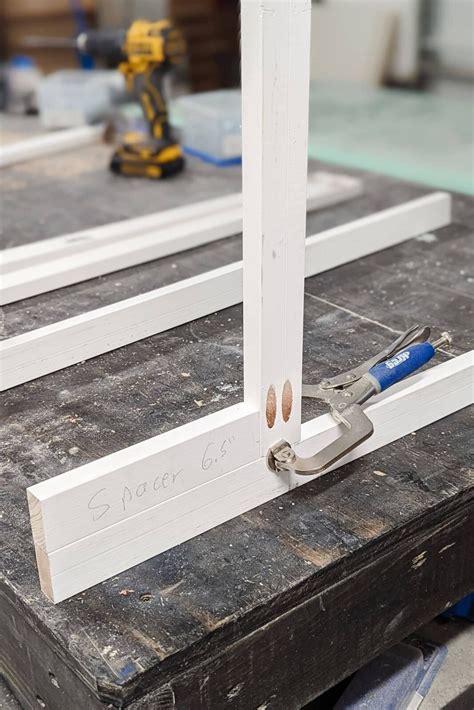Upgrade Your Kitchen: Simple Face Frame Attachment
Tired of your outdated kitchen cabinets? A simple, yet impactful upgrade is often right at your fingertips – literally. Attaching new face frames to your existing cabinet boxes can dramatically transform the look and feel of your entire kitchen without the hefty cost of a full remodel. This guide will walk you through the process, answering common questions and providing tips for a successful DIY project.
What is a Face Frame and Why Upgrade It?
A face frame is the decorative front frame surrounding your cabinet doors and drawers. It's the visible part of your cabinetry that sets the aesthetic tone. Outdated or damaged face frames can make your entire kitchen look tired and dated. Upgrading them is a cost-effective way to achieve a modern, refreshed look. You can achieve a completely different style – from sleek and minimalist to rustic and charming – simply by changing the face frame.
What are the Different Types of Face Frame Attachments?
There are several ways to attach new face frames, each with its own advantages and disadvantages:
- Full Overlay: This style completely covers the cabinet box, creating a clean, modern look. It's generally the easiest to install for DIYers.
- Partial Overlay: The doors and drawers partially overlap the face frame, offering a more traditional aesthetic. This requires more precise measurements and installation.
- Inset: The doors and drawers sit inside the face frame, resulting in a sophisticated, custom look. This option is more challenging for beginners.
How Difficult is it to Attach a New Face Frame? (Difficulty Level & Tools Needed)
Attaching a new face frame is a manageable DIY project for those with basic woodworking skills. The difficulty level depends on the type of attachment you choose (full overlay being the easiest). Regardless of the chosen method, you'll need these essential tools:
- Measuring Tape: Precise measurements are crucial.
- Level: Ensures your face frame is perfectly aligned.
- Drill: For creating pilot holes and securing the frame.
- Screwdriver (or drill with screwdriver bits): Matching your chosen screws.
- Wood Glue: For added strength and stability.
- Clamps: To hold the frame in place while the glue dries.
- Safety Glasses: Protect your eyes from flying debris.
- Pencil: For marking placement points.
- Saw (optional): For cutting the face frame to size if needed.
Can I Upgrade My Face Frame Myself, or Should I Hire a Professional?
While you can absolutely tackle this project yourself, hiring a professional is an option if you're uncomfortable with woodworking or lack the necessary tools. Weigh the cost of hiring a pro against the time and effort involved in a DIY approach. If you're aiming for a perfectly aligned and flawlessly finished result, a professional may be the better choice.
How Much Does it Cost to Upgrade Kitchen Cabinet Face Frames?
The cost depends heavily on the materials you choose and whether you hire a professional. Expect to spend anywhere from a few hundred dollars for a DIY project with readily available materials to potentially thousands if you opt for high-end materials or professional installation. Factor in the cost of the face frame itself, screws, glue, and any other tools you may need to purchase.
What Materials are Best for New Face Frames?
Popular choices include:
- Solid Wood: Durable and offers a classic look.
- MDF (Medium-Density Fiberboard): More affordable than solid wood, but less durable.
- Composite Materials: Offer various aesthetic options and can be more resistant to moisture.
Consider your budget, desired aesthetic, and the overall style of your kitchen when choosing your materials.
Step-by-Step Guide to Attaching a Face Frame (General Overview)
This is a general overview; specific steps will vary depending on the type of face frame and your cabinet configuration.
- Measure and Cut (if necessary): Carefully measure your existing cabinet boxes to ensure your new face frame fits perfectly.
- Prepare the Cabinet Boxes: Clean the surfaces where the face frame will be attached.
- Apply Glue and Attach: Apply wood glue to the back of the face frame and secure it to the cabinet boxes using screws. Use clamps to hold it in place while the glue dries.
- Level and Align: Use a level to ensure the face frame is perfectly straight and aligned.
- Attach Cabinet Doors and Drawers: Once the glue is dry, attach your cabinet doors and drawers.
Remember to always consult specific instructions for your chosen face frame and follow all safety precautions.
By upgrading your kitchen cabinet face frames, you can revitalize your entire kitchen space with a relatively simple and budget-friendly project. This detailed guide provides a solid foundation for undertaking this transformation yourself or informing your discussions with a professional. Remember to always prioritize safety and take your time for a successful and aesthetically pleasing result.

